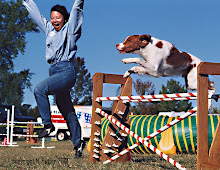One of the symptoms of CDS is alterations to the dog's sleep/wake cycle. Many of these dogs sleep all day and pace around the house all night, keeping owners awake. Attempts should be made to keep these dogs active and awake during the day. Take the pet for a walk, play games outside or inside the house. If the dog is active during the day, then hopefully he will be more tired and apt to sleep when the owner chooses to, also.
Another symptom of CDS is house soiling in a previously well-trained dog. Try to get the dog outside to eliminate on a very regular and perhaps more frequent schedule. Some of these older dogs forget what they went outside for, so taking them to a special toileting area can help them to remember their "duty."
It is well-discussed how protective "brain games" can be for human minds in protecting them against dementia. There are also "brain games" you can play with your dog (and it can be fun, even in a young dog!). These activities increase blood flow to the brain, which can be protective, even in a dog who does not exhibit signs of CDS.
- Find It! Have a family member or friend hold your dog in a room while you go into another room to hide a treat or favorite toy. Return to your dog, and tell him to find the treat. Start easy, and as your dog gets the gist of the game, make it more challenging.
- The Shell Game. Turn 3 cups upside down and place a piece of kibble or treat under one of them. Shuffle the cups around and have your dog "pick" one of the cups. If he selects the correct cup, then he gets the treat!
- New tricks. Teach your old dog a new trick. While there are many methods for trick training, clicker training is a method that is positive, hands-off, and stimulates the dog to think. Tricks for older dogs include: Walk backwards, speak, hand touch, touch a target, such as a plastic lid, circle right, circle left, play dead, shake hands, wave. The possibilities are endless!
- Take your dog for a walk. Walking off your property can be more than just exercise for the body, it is very stimulating for the brain. When a dog sniffs, he is reading the scent paths of all those who have gone before him - people, other dogs, cats, and wildlife.
